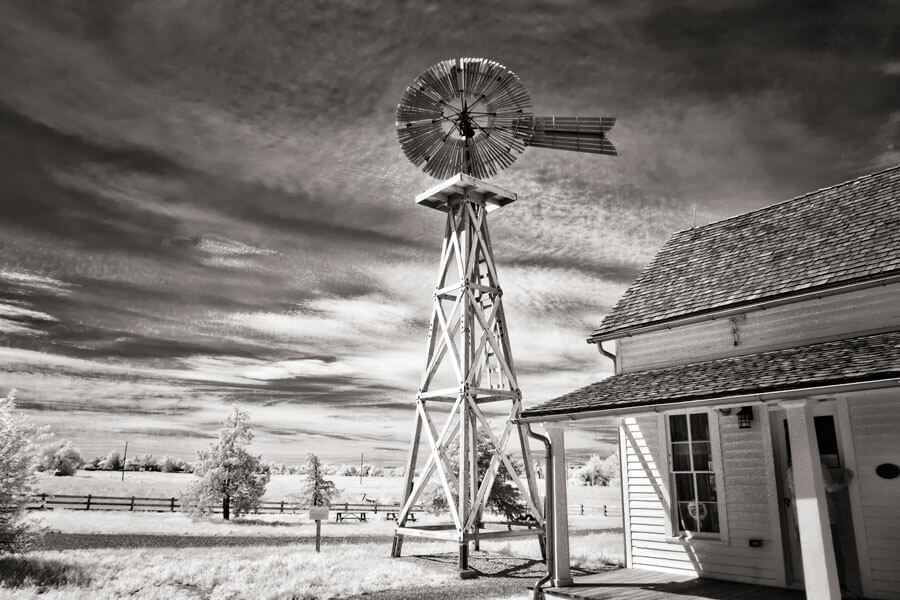Infrared Q & A
Today’s Post by Joe Farace
Here at Mirrorless Photo Tips, Mark and I love to hear from our readers and sometimes the questions they ask might be some of the same ones that you might have. Like this e-mail I recently received.
I have three Olympus E-1 camera bodies and I’m thinking about having one converted to Infrared. I’m thinking of the 715nM conversion that would be similar to my current Infrared filter method. My latest attempts have been with my Olympus PEN E-P2 and the Hoya R-72 filter. When I use the filter with a mirrorless camera, I can see the image in the viewfinder, but dimly. I’m wondering what the experience will be with an SLR? Focusing might be an issue, although I tend to use a short focal length lens and small apertures to maximize depth of field. I’m wondering what you think about this?

Here are a couple of points to keep in mind:
Any SLR, including the E-1, is going to have viewfinder visability problems when used with an IR filter. The E-1 has the advantage of a live view LCD screen so that should help somewhat, since the camera is probably on a tripod anyway. Mirrorless cameras, on the other hand, have electronic viewfinders that compensate for the filter making them easier to use. There is no real viewfinder on the E-P2 but while it’s preview screen is good even my E-P3 has a slightly better LCD. One thing I notice is that every new mirrorless camera has an even better viewfinder and LCD screen than the one before it.
 Using the Olympus VF-3 viewfinder might help, might not, depending on what kind of shooter you are. I use the Panasonic LVF1 on my (non-IR) GX-1 and like it a lot.
Using the Olympus VF-3 viewfinder might help, might not, depending on what kind of shooter you are. I use the Panasonic LVF1 on my (non-IR) GX-1 and like it a lot.
I don’t know of any company that converts the E-1 to IR. (If any readers do please let me know.) But since the sensors are the same size as a Micro Four-thirds camera some might do it. If you like, contact LifePixel (info@lifepixel.com) and tell them I referred you.
Having an SLR converted to IR will be a revelation; you can shoot it hand-held, look through the viewfinder and shoot it like any other camera. And the results are impressive. I still have a Canon 50D I had LifePixel convert and it the best of the several IR-converted SLRs I’ve owned. To be honest, most of my IR photography these days is done with either a Panasonic Lumix G5 or a G6, both of which \ LifePixel converted for me.
Like you I shoot with wide-angle lenses and small apertures; they seem to capture the IR experience best.
Hope I answered your questions.
Note: Try infrared photography by having one of your old cameras that’s gathering dust converted to IR-only operation. By using the coupon code “farace” at LifePixel. You can save some time when converting your camera to infrared.



